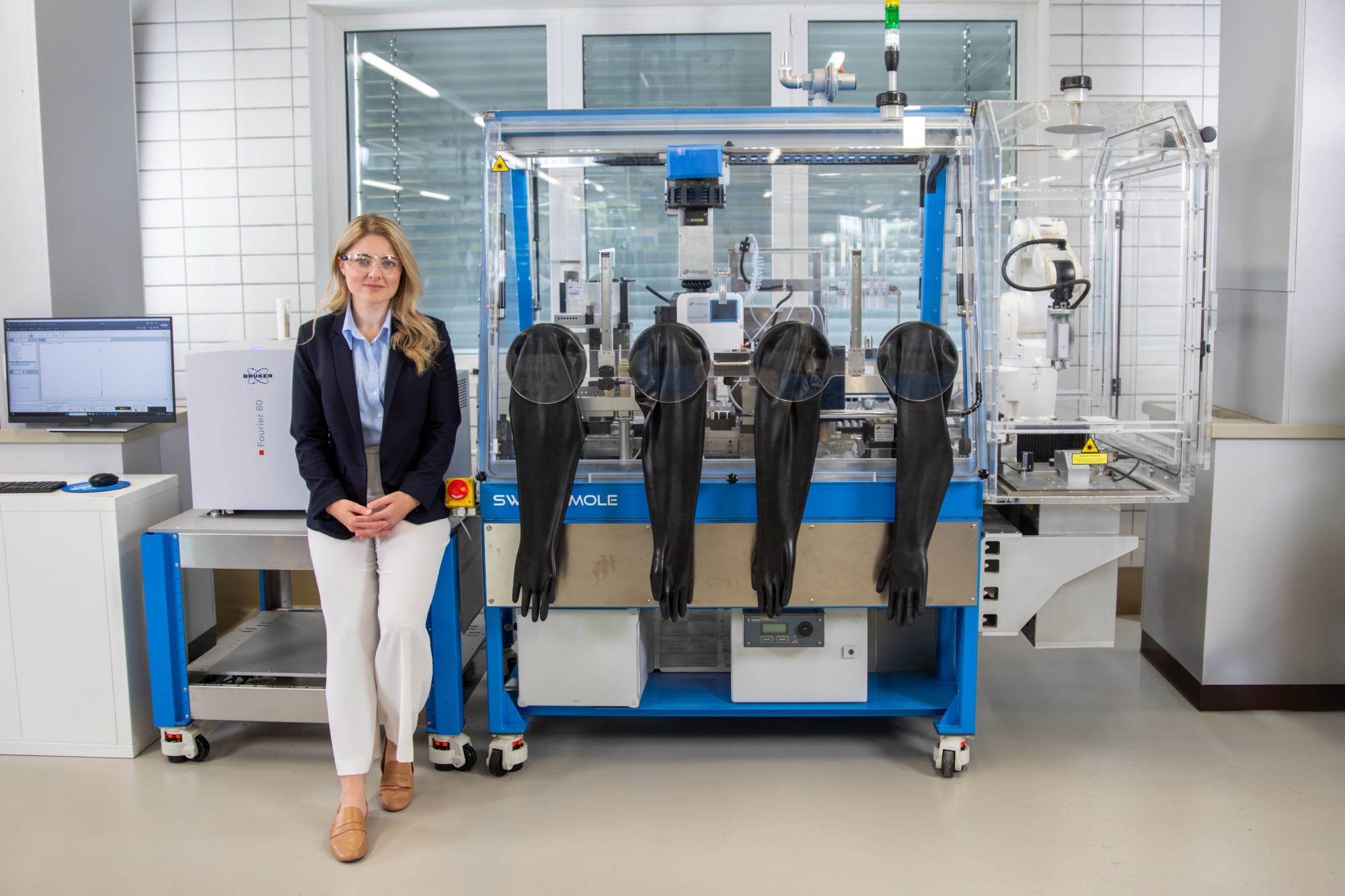NewsMedical talks to Bruker BioSpin about how Chemspeed’s modular automation systems integrate with NMR technology to enable smarter, more autonomous labs.
Chemspeed systems are known for their modularity and flexibility. How are these features being leveraged in current automation setups involving Bruker’s NMR systems?
Chemspeed provides modular, scalable automation solutions, from compact benchtop systems to fully integrated lab-scale installations.
This flexibility is particularly valuable when used in combination with Bruker NMR instruments. For example, workflows can range from simple sample preparation for benchtop screening with Bruker’s Fourier 80, to fully automated processes involving high-field NMR, including sample capping, transport, and submission to the NMR instrument.
Modular components allow for highly customized workflows, supporting everything from basic analytics to complex synthetic sequences. This approach ensures that labs can evolve their automation capabilities as their research needs grow.
With Bruker enhancing its automation for NMR, what new opportunities arise from tighter integration with Chemspeed platforms?
This integration enables a fully automated, end-to-end workflow, from sample preparation to NMR analysis. In analytical labs, this might include automated preparation of NMR tubes and direct loading into high-field instruments. In discovery workflows, Chemspeed systems can carry out reactions and feed the resulting products directly into benchtop NMRs for real-time monitoring.
In chemical development, pairing individually controlled reactors with real-time analytics provides immediate insight into reaction progress, allowing for faster and more informed decision-making. By linking preparation, execution, and analysis more tightly, labs can significantly boost efficiency while gaining deeper insights across the entire R&D process.

Fourier 80 and SWING XL. Image Credit: Bruker Biospin Group
How is real-time data transfer and closed-loop automation enabled for iterative workflows like reaction optimization or screening?
Real-time data transfer is facilitated by integrating Chemspeed’s control software with Bruker’s reaction monitoring software. For example, combining Chemspeed automation with the Fourier 80 benchtop NMR allows for inline reaction monitoring. When paired with advanced processing tools such as ECP, data can be immediately interpreted and used to inform next steps.
This creates a closed-loop system, where AI or machine learning algorithms can direct the next round of experiments based on the previous results, moving toward fully autonomous, self-optimizing workflows.
In regulated environments, how do Chemspeed and Bruker ensure data integrity, traceability, and remote accessibility?
Chemspeed’s ARKSUITE software supports compliance in GxP and GMP environments. It includes features like user access control, audit trails, electronic signatures, and detailed recipe management, ensuring traceable, secure operations.
Additionally, workflows can be transferred between sites or teams, enabling consistent method execution and data handling across global labs. These capabilities are essential for customers operating under strict regulatory frameworks such as pharmacopeia guidelines or internal SOPs.
How does automation reduce human error and increase throughput in routine and analytical lab processes?
Many lab tasks are repetitive, time-consuming, and prone to human error, particularly sample preparation. Automating these steps standardizes accuracy and removes variability due to user fatigue or inconsistent technique.
For instance, weighing and preparing dozens of samples manually can be inconsistent and slow. An automated system can complete these tasks with precision and speed, improving reproducibility and freeing up researchers for more value-added work. Integrating preparation with analytical instrumentation further streamlines workflows and boosts overall lab efficiency.
What recent innovations have been introduced into Chemspeed’s automation suite?
One major development is Chemspeed’s strategic partnership with Atinary Technologies, which brings AI-driven decision-making into its automation workflows. This collaboration includes integration with Bruker’s benchtop NMR, resulting in a self-optimizing platform for reaction screening.
To demonstrate the impact of this technology, two labs are being established (one in Basel and one in Boston) where customers can explore real-world applications of machine learning and automation in accelerating R&D.
Looking ahead, Chemspeed is also planning on expanding its analytical capabilities by integrating Raman, LC-MS, and infrared technologies for more comprehensive data coverage.
How does being part of Bruker support Chemspeed in developing more connected, autonomous lab environments?
Being part of Bruker allows Chemspeed to integrate more deeply across synthesis, processing, and analysis, laying the foundation for a fully connected lab infrastructure.
High-value applications like benchtop and high-field NMR, XRT, and IR are already up and running, with ongoing efforts to incorporate additional technologies such as Raman, UPLC, and LC-MS.
This level of integration supports the broader industry shift toward digitalization, smart labs, and greater automation. The shared vision is to move beyond isolated instruments and build connected ecosystems that enable faster discovery, increased throughput, and less manual intervention.
About Bruker BioSpin Group
The Bruker BioSpin Group designs, manufactures, and distributes advanced scientific instruments based on magnetic resonance and preclinical imaging technologies. These include our industry-leading NMR and EPR spectrometers, as well as imaging systems utilizing MRI, PET, SPECT, CT, Optical and MPI modalities. The Group also offers integrated software solutions and automation tools to support digital transformation across research and quality control environments.
Bruker BioSpin’s customers in academic, government, industrial, and pharmaceutical sectors rely on these technologies to gain detailed insights into molecular structure, dynamics, and interactions. Our solutions play a key role in structural biology, drug discovery, disease research, metabolomics, and advanced materials analysis. Recent investments in lab automation, optical imaging, and contract research services further strengthen our ability to support evolving customer needs and enable scientific innovation.